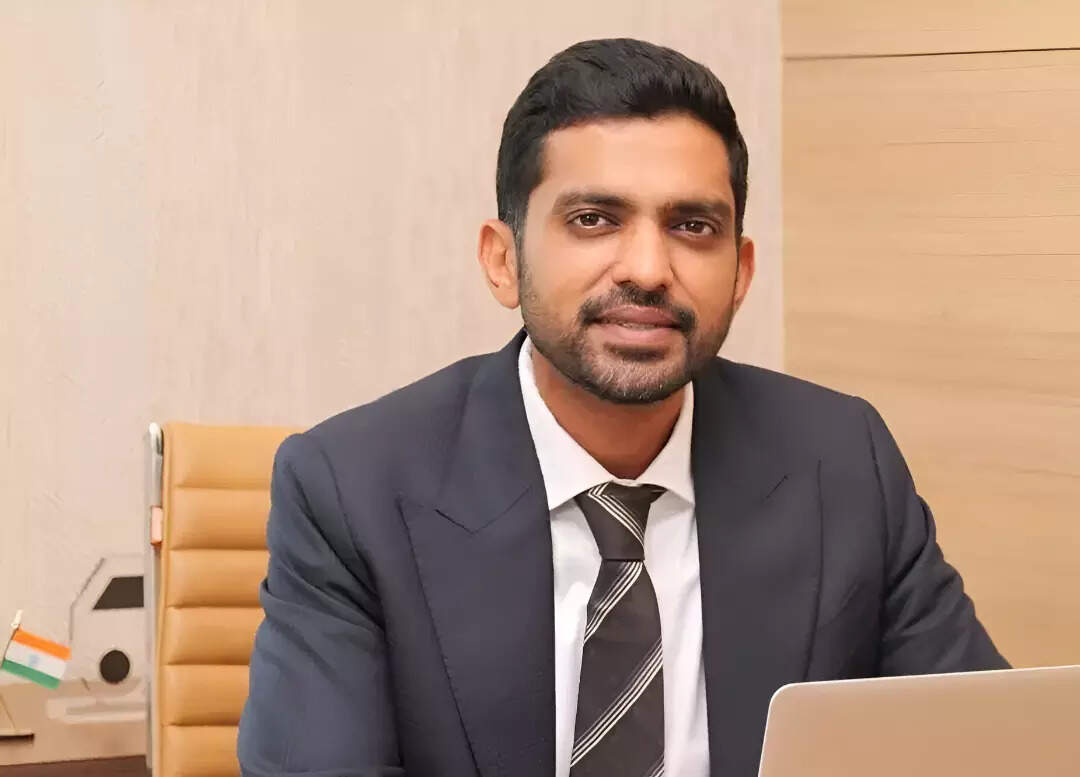
India’s logistics sector is going through a major transformation, with alternative fuels and digitisation at the forefront. In an interaction with ET Digital, Nikhil Agarwal, President of CJ Darcl Logistics, discusses the promise and limitations of liquefied natural gas (LNG), electric vehicles (EVs), and hydrogen in logistics. He also elaborates on how the company is supporting small fleet operators and reveals the intended deployment of its newly infused $32 million investments.Edited excerpts:
Question: What’s your current view on alternative fuels in logistics, particularly LNG, EVs, and CNG? Where does CJ Darcl stand in terms of adoption?
Nikhil Agarwal: Honestly, we are still in the exploratio phase. These technologies are emerging, and a lot of pilots are happening across the sector. If we break the logistics industry into two: local/intracity and long-haul freight; LNG is better suited for long-haul while EVs are more promising for short-haul, intracity use.
Original equipment manufacturers (OEMs) have just started launching 55-tonne LNG trucks. Some are still testing. Also, LNG fuel infrastructure, like pump networks, is just now being rolled out across the country. Over the last three to four months, we’ve been talking extensively with fuel suppliers and OEMs. So, the space is exciting, but everyone is still figuring it out.
Question: What kind of timeline do you see for mainstream deployment of these alternative fuel vehicles?
Nikhil Agarwal:
For LNG, I think we’ll start seeing meaningful numbers within six months to a year. If the ecosystem comes together—fuel, infrastructure, OEM readiness—it can scale over the next 5-6 years.
EVs, on the other hand, will likely remain limited to short-haul applications, unless the battery prices drop significantly. Right now, LNG vehicles cost nearly twice as much as diesel ones, and EVs can cost up to four times more. That pricing mismatch makes long-haul EV deployment tough. Heavy EVs today have a range of just 150-200 km, which isn’t practical for large-scale freight.
Question: And hydrogen ? Which segments do you think will adopt it first?
Nikhil Agarwal:
Hydrogen will make more sense in long-haul heavy applications; port-based or short-distance movement can be handled well by EVs. Hydrogen doesn’t make sense there, both economically and operationally.
As for the transport of hydrogen itself—yes, it’s flammable and expensive to move. But we believe that comes much later in the journey. First, the product and fuel ecosystem need to mature. Once there’s traction, we’ll step in as operators to move the fuel safely.
Question: Are carbon emissions being actively tracked in the logistics sector? How does CJ Darcl approach this?
Nikhil Agarwal: Honestly, it’s still a very niche area. But we’ve been tracking carbon emissions via our TMS (Transport Management System) for over two years because if we don’t measure, we can’t reduce. We saw this coming… Clients will increasingly ask for data on emissions. So, we integrated it early on, and now we have a system in place that’s both functional and forward-looking.
Question: These emerging fuels are capital-intensive. Are you doing anything to help downstream partners or smaller vendors adopt them?
Nikhil Agarwal: Yes, and this is important. Most of our vendor partners, especially small fleet owners, don’t have the resources to risk investment in unproven technology. Whenever a new technology enters the space, we take on the role of the flagbearer. We invest, we test, we run the product with OEMs, and we identify the problem areas—whether it’s fuelling delays or route suitability.
Question: Given India’s highly fragmented logistics sector, how are you working with small fleet owners (SFOs) to modernise and integrate them?
Nikhil Agarwal: Almost 85-90% of our business is powered by SFOs. For years, we’ve helped them with fair freights, timely loads, and fast payments.
Now, we’re working on a platform to bring them better access to finance, insurance, tires, lubricants, and more. It’s still in the works, but the idea is to create a digital stack that supports lakhs of vendor partners in our network.
Question: What are your thoughts on India’s multimodal infrastructure? Are you investing in coastal or rail freight as part of your expansion?
Nikhil Agarwal: India’s long-haul movement is still dominated by roads, then rail, and then coastal. Despite our vast coastline, coastal freight hasn’t scaled the way it should have. But infrastructure is gradually catching up.
We started rail operations around 2006-07, and today about 15% of our revenue comes from it. In 2016-17, we launched a coastal leg from Haldia to Bangladesh to tackle road bottlenecks.
We are also exploring South-to-East coastal movements and assessing fitment and competitiveness. Wherever we find viable use cases, we’ll expand.
Question: How do you view government initiatives like Sagarmala or inland waterways? Are they on the right track?
Nikhil Agarwal: I think the government has done a great job laying out the policy framework and guidelines. It’s now up to operators and departments to adapt and implement. Some projects take off faster due to existing investment and aligned departments. Others take longer. Eventually, all of it will fall into place; it’s a matter of pace and prioritisation.
Question: Any global best practices you would like to see India adopt in logistics policy or execution?
Nikhil Agarwal: One is trailer interoperability. Globally, trailers can easily switch carriers or modes, which adds massive efficiency. Second is battery swapping, especially in EV logistics.
We are already in talks around some pilot projects that could bring such systems here, but it’s early days.
Question: CJ Darcl recently received $32 million in funding. How do you plan to deploy it?
Nikhil Agarwal: The funds will go into four core areas: first, investment in alternative fuel vehicles and pilots; second, strengthening our multimodal mix—rail and coastal; third, expanding our warehousing and distribution network; and finally, enhancing our tech capabilities. These pillars are central to building a more resilient, tech-led, and sustainable logistics company.
